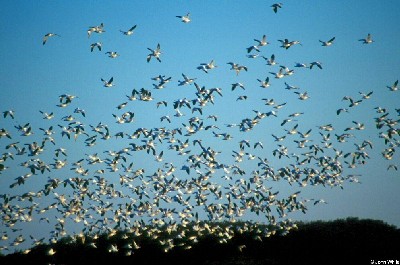
Because of its nearly 3,000 acres of tidal marsh, ponds and creeks, black ducks flock to the island located in Tangier Sound near the town of Crisfield. Other tidal wetland wildlife species are also attracted to the area, but its attraction for black ducks is legendary. In the 1960s, wildlife biologists became concerned about the black duck, which seemed to be declining in numbers. Loss of habitat was thought to be the primary cause. Today, black duck populations are on the mend and Cedar Island WMA is one of Maryland's best winter habitats for these beautiful birds.
What To See
Of course, Cedar Island is one of the best places to see black ducks in the winter. In addition, barn owls use nest boxes placed in the marsh to raise their young. Barn owls typically nest between April and September, which is the best time to see them.
What To Do
The many black ducks and other waterfowl, including mallards, scaup and bufflehead attract hunters. Trapping is offered by yearly lease. Crabbing, as well as fishing for sea trout, rockfish, bluefish and spot are activities enjoyed by visitors. Mosquitoes and other biting insects are plentiful from spring through early fall. Bring insect repellent, minimize exposed skin and wear light- colored clothing.
Area Regulations
Non-hunting Users Guide
Site Management Goals
 Directions
Directions
The island can only be reached by boat. A nearby ramp at Crisfield is available for public use. From U.S. Route 13, take MD 413 to Crisfield and Somers Cove Marina or Jenkin's Creek Wharf. For additional information, contact the Wellington Wildlife Office at (410) 651-2065.
 Click Here for Map
Click Here for Map
Photograph of Snow Geese in Flight Courtesy of John White